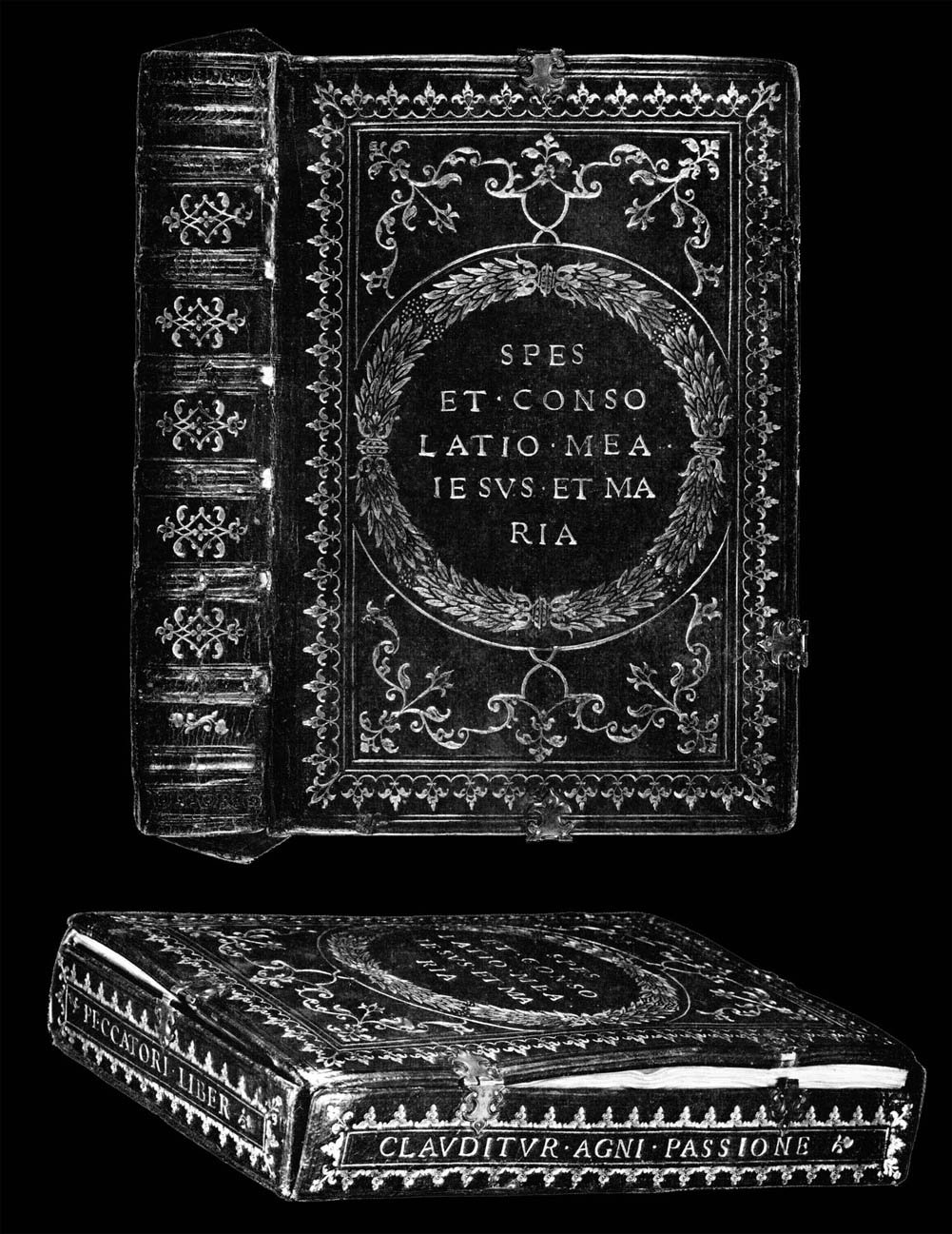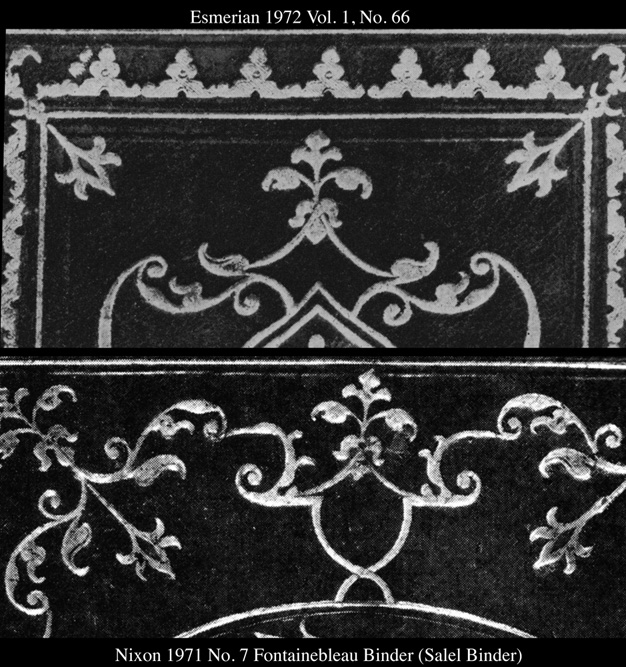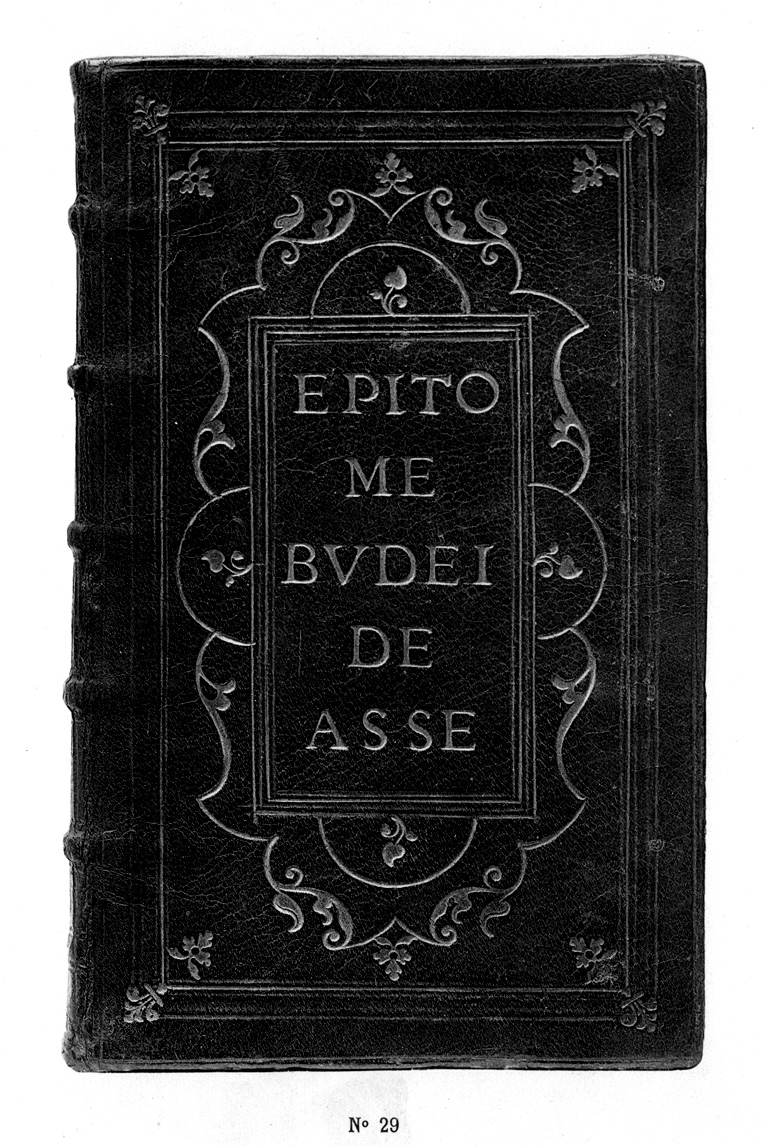

| The binding shown above is found in Howard M. Nixon's 1971 book entitled SIXTEENTH-CENTURY GOLD-TOOLED BOOKBINDINGS IN THE PIERPONT MORGAN LIBRARY. It is binding number seven found on page 23 under the heading PARIS BINDING BY THE FONTAINEBLEAU BINDER c. 1540. Mirjam M. Foot, in an introduction to her 2009 book THE HENRY DAVIS GIFT: A COLLECTION OF BOOKBINDINGS (VOL. III). informs us that The 'Fontainebleau binder' is now called the 'Salel binder'. The binding shown above is therefore quite likely to have been executed by the Salel Binder. On the previous page we examined a binding that Esmerian attributed to Etienne Roffet, however we can see here in this binding a few details that will definitely show that the binding in question was in fact by the Salel Binder for here we see the same tools. |

| Esmerian also made another claim about his item No. 66 binding, that was that the border made with small tools (petits fers trilobes) was identical to one found on another of his bindings (No. 105) which was an obvious Roffet binding. Coincidentally we see here on the unusual flaps shown in the lower part of Nixons reproduction, the same border as can be seen on item No. 66. |

| In Comparative Diagram 2, we can see that Esmerian was close but not correct, these two borders are amazingly similar especially if they were actually made with individual small tool imprints. Esmerian was fooled therefore by a number tools that were nearly identical to the Roffet tools and plaques. Once however he had made this mistake he went on to make others, attributing another binding to Roffet that also shared some of the Item No 66 imprints. This was his binding No. 41, a reproduction of it is found in the Gumuchain Catalogue (1930, XII, no. 29) which is very fortunate for us as the reproduction is of the highest quality (shown below) , and we can extract some excellent imprint copies from it. these I show in the diagrams below however I want to just mention that Nixon explains in his description of this binding by the Fontainebleau binder, where this name came from. Dr Ilse Schunke was first coin this name and listed bindings that can be attributed to him based on her study of imprints. Nixon further lists a number of bindings that can be attributed to this binder, included in this list are Esmerian's item No. 66 and No 41! (these appeared in the 1957 Baltimore Exhibition as items 250 and 251). Nixon also knew of the grande arabesque plaque duplicates and their differences which have been known in fact for a long time... thus it is surprising that Esmerian was not also aware of these facts? |


| In Comparative Diagram 3, I show what is probably the most distinctive pair of Salel Binder imprints. These differ considerably from most other similar imprints by other binders, as can be seen in Comparative Diagram 4. Once you can clearly grasp the design differences in this single imprint form, you can easily identify the bindings of some of the major binders of the mid 16th century. Personally, I find the Salel binder example the easiest to recognize, the upper part somewhat reminiscent of an elephants trunk. Comparing Salel 8a with Salel 8b you will also notice that the negative space inside the trunk is not the same for each one. |

| information about the author | return to the home page of VIRTUAL BOOKBINDING |